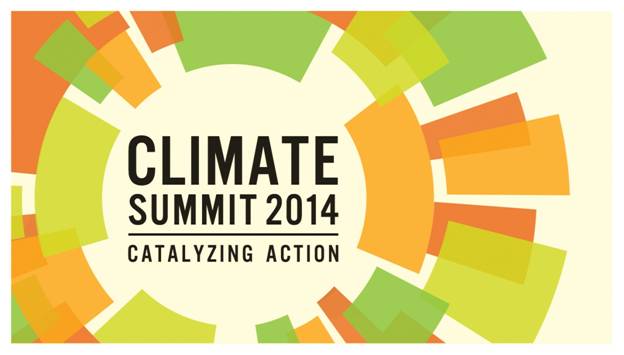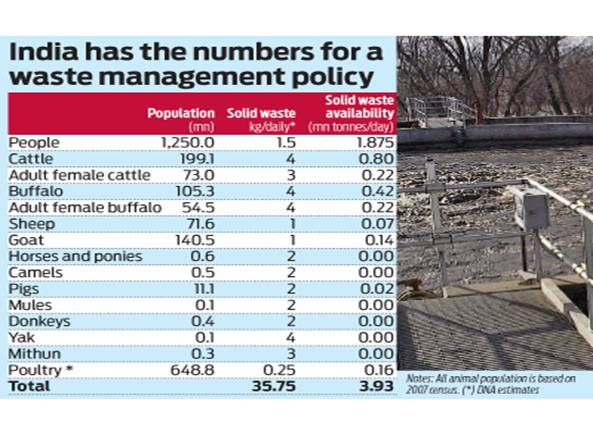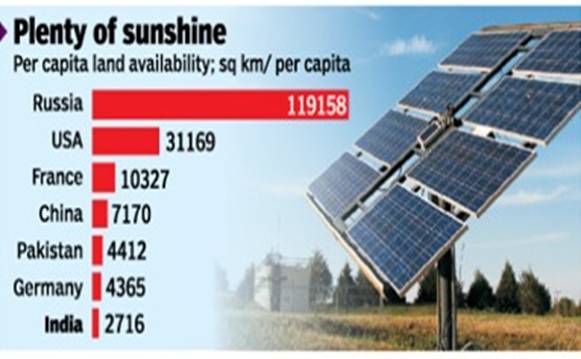UN Climate Summit, People's Mobilisations And A Mutual Top- Down/Bottom- Up Solution
By Avinay Umesh-Saiyogita
20 September, 2014
Countercurrents.org
Preamble: Sustainability means different things to different region and people. What could be sustainable for a low income, high population country like India may be not be for the USA and vice-versa. For a long time now we have tried only a top-down, technocratic, one-for-all approach to solve the climate problem without any significant success, and since this summit is the last chance to get consensus on climate before the 2015 talks and along with it the replacement of Millennium Development Goals with Sustainable Goals, should we not push the world leaders for a mutual top-down/bottom up approach for mitigation and adaptation? Therefore, if the world leaders could agree over common principles such as emission reductions, yet different practices based on sustainable models for a given context and people, in international and in their respective domestic spheres, the problem of climate change and equity could be solved.

To assume an understanding of basic details, often becomes the habit of anyone working immersed in a cause or in a specialized field of knowledge. But, in the case I am about to make in relation to the issue of climate change, it is important to draw out the basic details in order to understand the crucial moment we are all in together, yet the separate/different solutions that we need to work out. So, to begin with it is important to tell the readers the what's and why ' s of two important events: the UN Climate Summit 2014 and the People's Mobilization.
Why the UN Climate Summit? 1
The Summit will serve as a public platform for leaders at the highest level – all UN Member States, as well as finance, business, civil society and local leaders from public and private sectors – to catalyze ambitious action on the ground to reduce emissions and strengthen climate resilience and mobilize political will for a meaningful, universal climate agreement in Paris in 2015 that limits the world to a less than 2-degree Celsius rise in global temperature.
Why is the Summit being held this year? 2
Countries have agreed on the need for a meaningful, robust, universal, legal climate agreement by 2015. (It is also the last chance to get consensus on climate change before 2015 talks!)
What type of announcement can we expect at the Summit? 3
The Secretary-General Ban Ki Moon has asked world leaders to come to the Summit to announce bold actions that they will be taking in their countries. There will also be announcements from a number of coalition initiatives that consist of participants from Governments, the private sector and civil society, will address several high-impact areas, such as climate finance; energy efficiency; renewable energy; adaptation; disaster risk reduction and resilience; forests; agriculture; transportation; short-lived climate pollutants; and cities.
What will the outcome of the Summit be? 4
The outcome will be the sum total of the announcements made by the leaders of government, business, finance, and civil society during the Summit to address climate change, along with a renewed sense of hope, optimism and momentum.
Though the Summit is not part of the UNFCCC negotiating process, it is seen as an important milestone on the path towards closing the emissions gap , the difference between reduction pledges and the necessary emission cuts for the 2 °C scenario , and to a new legal agreement on climate change, that is to be approved by the COP21 in Paris in December 2015. 5
The failure of the world community up till now to agree to a post-Kyoto consensus binding all the nations is another reason for the Summit. As the Millennial Development Goals (MDGs) are to be replaced with Sustainable Development Goals (SDGs), the urgency to come to a consensus to fight climate change and its effects makes it even more urgent.
People's Mobilisations
People's Climate Mobilisation is primarily organised by 350.org . It is meant to be the biggest climate march ever! Alongside, individuals can organise their own climate march and be a part of the People's Mobilisations.
This September, world leaders are coming to New York City to talk about how to address the climate crisis. This is a crucial moment; we're at a crossroads. We can and must change course by building a new economy through efforts to reconceive corporations and redefine economic progress. We need to do this in order to address the greatest crisis in the history of mankind. Together, we can create a world with cleaner air, healthier communities, and more economic opportunities. This is what we mean when we talk about climate justice. We know this world is within reach, but we're going have to fight for it. 6
The People's Mobilisations is about 'taking to the streets this September to show our politicians that they need to choose a side. It's either the people or the polluters.' The demand is for Action, Not Words : taking the necessary action to create a world with an economy that works for people and the planet – now. In short, we want a world safe from the ravages of climate change. 7
But, easier said than done. The UN wants the Nation-States to make announcements (words) to address climate change and the People's Mobilisations -representing the people- wants action, not words.
And in all this, how are we ( the people? ), to view the actions of the world leaders and of the big civil society organisations?
Undoubtedly, the lack of seriousness concerning climate change in world leaders, especially of the North, proves the lack of political will and hand-in-glove practices of big politics with big business.
But, what of the big civil society organisations that are countering the anti-climate movement ? How can one know the sanctity of their actions? Agreed that they are working for the good of all, but what is the sub-text of their speech? Does their big multinational size and way of working makes them similar to the companies they are against? If not, what makes them different?
The book Protest Inc . ‘highlights the enclosure of activism in increasingly large and bureaucratic NGOs. In the NGO world, there are three dominant, interconnected imperatives: winning victories, getting credit for one's accomplishments, and raising money. In many, perhaps most, contexts today, the desire to be “effective” compels NGOs to a certain tameness. We see this, for example, in the severely circumscribed world of climate action advocacy in Washington, DC, today. The imperative to get credit for accomplishments and to raise funds to get more underlie the current fracturing of each progressive cause into an often bewildering array of separate, competing groups, each promoting its own brand. And in our world of creeping corporatocracy and plutocracy, NGO success on all three fronts can benefit greatly from close links to business and family wealth. 8
How closely are these big civil society organizations of the North working with grassroots movements in the South? What are they doing to ensure that the divestment from fossil fuels isn't re-invested in renewable energy to stop the possible takeover of renewables by the market , so that it remains a decentralised and democratic mode of production? What will be the new political-economy of the renewable energy? Will action on climate change also bring equity along with mitigation/resilience? I believe it is vitally important to inject a string input from the Global South into the worldwide civil society struggle against climate change, which today bears a strongly Northern impress. 9
The answers to these questions are equally important to the central question of climate change as an existential threat.
A ‘local' Indian model for sustainability
'India's meteoric economic rise in the last two decades has been impressive. There is however a dark side to it, hidden or ignored. Well over half its people have been left behind or negatively impacted; and there have been irreversible blows to the natural environment. Globalised development as it is today is neither ecologically sustainable nor socially equitable, and is leading India to further conflict and suffering. There are, however, a range of alternative approaches and practices, forerunners of a Radical Ecological Democracy that can take us all to higher levels of well-being, while sustaining the earth and creating greater equity,' 10 says Ashish Kothari, founder member of Kalpavriksha.
Can India combine climate-responsible development with a commitment to building a modern, open, inclusive and plural society free of hunger, extreme hierarchy and gross injustices, in which every citizen can look forward to full democratic participation in making decisions that make her future? The answer is not that India can achieve that combination, but that there is no other way of realisng this vision except through climate-friendly, low carbon and equitable development. 11
Sustainability means different things to different region and people. What could be sustainable for a low income country like India may be not be for the USA and vice-versa. For a long time now we have tried only a top-down, technocratic, one-for-all approach to solve the climate problem without any significant success, and since this summit is the last chance to get consensus on climate before the 2015 talks and along with it the replacement of Millennium Development Goals with Sustainable Goals, should we not push the world leaders for a mutual top-down/bottom up approach for mitigation and adaptation? Therefore, if the world leaders could agree over common principles such as emission reductions, yet different practices based on sustainable models for a given context and people, in international and in their respective domestic spheres, the problem of climate change and equity could be solved.
For example, India, despite being the third largest emitter in the world has its per capita emission as low as 1.3 tons. So, a one-for-all policy would do injustice to marginalised communities and maintain the status quo for the top ten per cent. of its largest emitters. And India deserves special attention for three reasons. First, it is the world's second most populous country, with a fast growing economy and yet with the largest number of dirt-poor people in any country. Second, India is a 'laboratory' for testing various things, including the success or failure of numerous energy models, including fossil fuel-based ones, decentralised or renewable energy systems, and different mitigation and adaptation strategies. And third, India lays claim to a climate policy and negotiating position based on certain principles(?). 12
Here, I will draw three examples for how India could work out these sustainable practices based on principles (some homegrown, some learned from other countries) to show how this could be done.
1. Learning from its indigenous farmers, a homegrown model: Although India hardly consumes meat, almost every farming family in India owns livestock. Therefore, one needs fodder to feed the livestock used for milk, fuel, field ploughing and fertilizer (cowdung). The US has to grow fodder to feed its cattle. If livestock sector contributes to 20% of carbon emissions worldwide, it is due to the industrial model of production, and the separation of livestock from the fields. In India, Livestock is not grown separately. The very animal used to plough the field, is fed by the straw of fodder left behind from that crop, and the animals faeces feeds that field. With every kilogram of rice grown, there automatically comes four kilograms of straw to feed the cattle. Hence, reduction in consumption of resources (Or using fully/optimally resources) and less emissions.
India also enjoys a major advantage over other countries due to its large, actually largest cattle population in the world! When you have 281 million cattle, you can have a lot of ‘bullshit'. Some would laugh that off. But for energy experts, it is serious matter. According to them, 10,000 cattle can produce enough dung to set up a 1 MW power plant. This means India could fuel 28 GW of power generation capacity without having to depend on imported fuel or even polluting coal. 13
2. Lessons from Sweden, an imported/shared model: The Swedish model of waste management and waste to energy would help a high emitter like India produce renewable energy, and solve its waste problem!
Sweden is a small country. Its landmass is just 450,295 sq. km compared with 3,287,590 sq km for India. It population is even smaller – 9.6 million people compared with 1.2 billion for India. But its industrial innovation is amazing – Sweden manages its energy requirements, using non-conventional sources of energy, wherever possible, to reduce its dependence on oil and also to remain environmentally responsible. Consider this: The country has 242 biogas plants (2012, the latest figures) -- 135 use municipal waste water (sludge), five use industrial waste (often waste water), 21 adopt co-fermentation of different kinds of waste including household waste. Approximately 50% of all municipal solid waste (MSW) is converted into energy, and less than 1% of the MSW ends up as landfill (Sweden now has a ban on landfills in place). Around 53% of the biogas produced in Sweden is used as vehicle fuel. In 2013, vehicle gas replaced gasoline and diesel equivalent to about 97,000 cars. About 62% of this was biomethane.

The potential in India for such waste management models is huge . And this does not include food waste or consumer waste (packaging, newspapers, etc). With the world's second-largest population of humans, the largest population of cattle, and a large number of other animals, India could have created Gobar banks. Is it difficult for India to have a national waste management policy? Could we not ban landfills, the sway Sweden has? 14
3. Solar as a solution, a model to be expanded: India has plenty of sunshine. It has many people. India appears to have forgotten something important – rooftop solar. Assume five people to a household. That gives us 250 million households. To be conservative, let's take just one-fifth this number, 50 million, as households with rooftops. Even a conservative figure of 200 square feet per rooftop (village rooftops can be significantly larger), with 100 watts of installed capacity per square metres, gives us a 2 kW system per rooftop. The 50 million households will thus have a combined capacity of 100,000 MW. That should give us an annual output of 1,600 kW/hour of installed capacity.

Critically important, this can be done without using up large tracts of land. Each household thus becomes both producer and consumer. The household consumes freely his own rooftop's power but also earns when he sells surplus power to the grid. Since the distance between the solar panels and the households isn't great, there will be huge savings in transmission (capital and recurring) costs. Once installed, maintenance costs are minimal. The savings would be massive for rural household electrification as compared to connecting a village to the grid would cost some 2.5 lac rupees ($4000!). Also, India's transmission and distribution losses are an enormous 33 per cent! 15
The necessity for a top-down approach
A bottom-up approach alone is not a viable solution for climate change. Mitigation needs a top-down approach and adaptation needs a bottom-up approach. If not, then the culprit, ie, the rich Northern countries will never mitigate. Top-down is necessary as the countries that have polluted the most and have an abundance of resources are not taking sufficient cuts. And since two thirds of emissions are caused by the Northern countries and the repercussions of climate change are affecting the poor people and the Southern countries the most, we must see the issue of climate change as one of ethics and equity as well.
At the international level, we have to be able to agree that each nation will commit to ensure that the bigger polluters are brought to check. This means that the rich and the corporations across the world have to be given mitigation and adaptation targets. We need stricter international and domestic laws to ensure that this happens. At the domestic level, the community and livelihood sectors need to be supported (financially and technologically) wherever their carbon footprint is low to reach a minimum human level and also to develop sustainable alternative models as mentioned above. This would also make the poor economically viable.
Notes
1. http://www.un.org/climatechange/summit/
2. Ibid
3. Ibid
4. Ibid
5. http://en.wikipedia.org/wiki/Climate_Summit
6. http://350.org/peoples-climate-mobilisation-a-global-invitation/
7. Ibid
8. http://www.greattransition.org/publication/searching-for-radicalism-in-a-corporate-age
9. Praful Bidwai, The Politics of Climate Change and the Global Crisis, op. cit., p. XXI
10. Globalisation in India, Kalpavriksha
11. Praful Bidwai, The Politics of Climate Change and the Global Crisis, op. cit., p. 164
12. Praful Bidwai, The Politics of Climate Change and the Global Crisis, op. cit., p. 5
13. http://www.dnaindia.com/analysis/column-the-cow-jumps-over-the-moon-1810578
14. http://www.dnaindia.com/money/report-policy-watch-lessons-we-can-learn-from-
sweden-in-waste-management-2007453
Avinay Umesh-Saiyogita works at Centre for Education and Documentation in Mumbai. The author is interested in the politics of everything.
Comments are moderated
